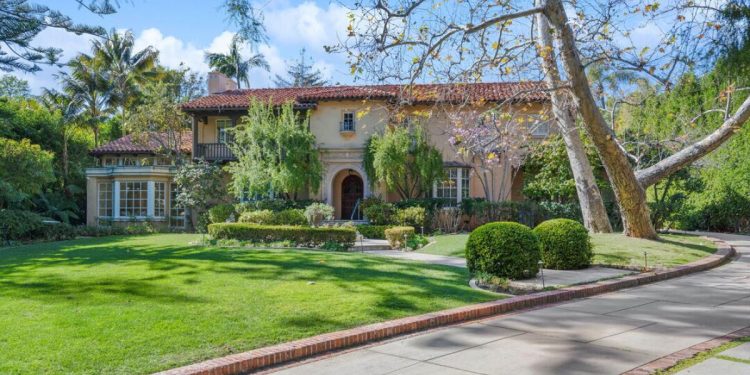According to whom you ask, the measurement of the ULA was a boon or a disaster for the Los Angeles real estate market. A new report suggests the latter.
A new analysis Lewis Center for Regional Policy Studies of the UCLA written by Michael Manville and Mott Smith affirms that the so-called “Manor tax” has slowed down sales, especially for commercial properties.
ULA measurement was adopted in 2022 and entered into force in April 2023, bringing a charge of 4% to all sales of properties of the superior to $ 5 million and a burden of 5.5% in sales greater than $ 10 million. The product finances affordable housing prevention and homeless; About two years, the transfer tax has increased more than $ 632 million.
But the report – published Tuesday and entitled “The unforeseen consequences of the ULA measurement” – suggests that the tax has cooled a formerly robust market in Los Angeles, while sales greater than $ 5 million have remained stable on other markets through the county of the uninvised by the tax.
The study has analyzed 338,000 sales of goods in the past five years and has found that the decline is the most acute on the commercial side. By virtue of the ULA, non -family transactions dropped 7 to 15% per month in postal codes, a trend that has been made up of 30 to 50% over two years.
“The hardest affected properties are not luxury houses, but multifamilial, commercial and industrial buildings – the very types we need to support the production of housing and employment growth,” said Smith.
A night decline in the city in two ways, supports the report. First, commercial properties are often sold for much more than unifamilial houses, therefore even a slight drop in sales leads to a sharp drop in tax revenue. In addition, commercial sales generally lead to a new multifamilial development, which the city desperately needs in the middle of a housing crisis.
Smith said the decline has led to an annual loss of $ 25 million in land tax revenue, and that this loss will be accompanied in the coming years. In a decade, loss of income could exceed the funds provided by the tax.
Land taxes are different from the money provided by the ULA transfer tax. Land taxes circulate in the city’s general budget, while ULA taxes are specifically intended for affordable housing and homeless.
Smith and Manville have suggested reforming the tax to affect only the properties that have not been reassessed for 20 years, which could exempt multifamilial developers while targeting luxury owners whose value of properties has been skyrocketing over the years.
Joe Donlin, who is director of United to HouseThe organization behind Measure Ula, said the tax did what it wanted to do.
“On the occasion of his second anniversary, Meason Ula already produces hundreds of affordable housing units, protecting tens of thousands of tenants and creating thousands of construction jobs,” said Donlin. “Its initial drop in income owes more to promoters and the real estate hall in the hope of overthrowing it in court or in the ballot box – and lose.”
The tax has survived multiple legal challenges In recent years of the luxury real estate community, which has sought to declare the unconstitutional measure. In addition, revenues flouted during the first year of the program, because the owners sold houses in the days preceding Lacnes found To avoid paying it.
Income and sales have increased both from year to year as legal challenges fade. The tax has raised approximately $ 296 million during the year 2024 and has collected $ 320 million so far during the year 2025. But the figures are still not below the initial projections of $ 900 million per year.
California Daily Newspapers


